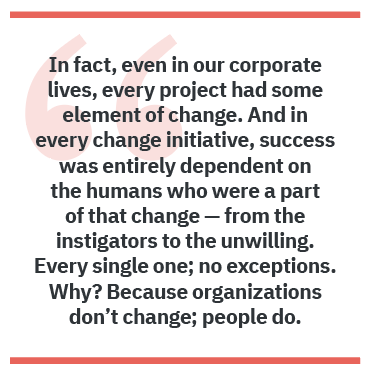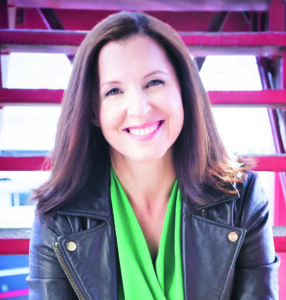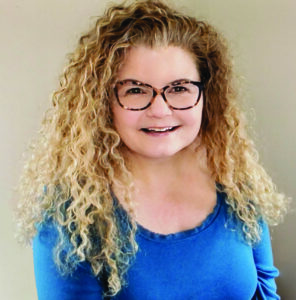By Melissa Breker and Andrea L. Ames | STC Fellow
Positive approaches to changes at work that take the whole person into account
Business is change. Business survival requires that we experiment, fail, learn, course-correct, and pivot our way to success. For a content team to operate like a content business, the members must be flexible, tolerant of ambiguity, and must constantly adjust, evolve, transform, and adapt. In other words, change.
Change. Is. Hard. Ask anyone who has tried to break or start a habit — even when they desperately want to. Why is it so hard? Because the human brain is wired to resist change. Our amygdala — the part of our brain that controls our “fight, flight, freeze, or fawn” response1 — detects a threat when it senses change and responds by attempting to protect us from that change, creating resistance. And that typically unconscious resistance, in all its many forms, is one of the biggest challenges to change, both personal and organizational. It often significantly influences organizational change efforts away from success, requiring a personal approach to traditional change management processes.
Managing Change
Change management is most often misunderstood to be a systematic process applied to an organization that needs to move itself and its constituent parts, including people, from point A (a beginning state) to point B (an end state). If you Google “change management,” you will see 5,920,000,000 search results (give or take a few million) that range from models, principles, steps, and key performance indicators (KPI) to skills, training, and certification programs. With all of the advice and training out there, managing change should be easy, right? Just apply change-management model A to organization change project B and achieve change C, right? As it turns out, not so much.
As consultants, we (Melissa and Andrea) transact business using the currency of change. We might be engaged to help a client who recognizes that they are engaging in a big change that must be intentionally led (a term we prefer more than “managed”). Or a client might not readily see a small, but needed, change in thinking. Big or small, all change requires planning and strategic prioritizing, regardless of the size of the initiative.
Every consulting, training, and facilitation engagement that we have taken on has been an exercise in change, whether the client recognized it initially, or not. In fact, even in our corporate lives, every project had some element of change. And in every change initiative, success was entirely dependent on the humans who were a part of that change — from the instigators to the unwilling. Every single one; no exceptions. Why? Because organizations don’t change; people do.
If people are the entities that are changing, not organizations, then managing change is not just about models, principles, steps, KPIs, and skills. Managing change is not just about moving from point A to point B. It’s not just about installing a new technology or implementing a new work process.
Central to change management is leading and coaching people.2,3
Coaching

Coaching is another misunderstood practice, especially due to different kinds of coaches resulting in an overloaded definition. The International Coaching Federation (ICF)4 is a global organization dedicated to advancing the coaching profession by setting high standards, providing independent certification, and building a worldwide network of trained coaching professionals. Professional coaching, according to the ICF, is partnering with clients in a thought-provoking, creative process that inspires them to maximize their potential, improve their outlook on work and life, improve their leadership skills, and unlock their potential.
Professional coaching focuses on setting goals, creating outcomes, and identifying opportunities for development based on individual strengths and capabilities, not on behaviors that are being executed poorly or incorrectly.5,6
It is not:
- Therapy
- Consulting
- Mentoring
- Training
- Athletic development (i.e., sports coaching)
If you read “maximize,” “improve,” “setting goals,” “creating outcomes,” and “opportunities for development,” and thought, “That’s change!” you’re not alone. The benefits and outcomes of professional coaching are typically about making changes — for individuals, for teams, and thus for organizations.
And in our experience, coaching — along with a people-focused change management approach — is what ensures success in change initiatives, allowing for, and working with, our brain-based resistance to that change.7,8
“Dammit, Jim! I’m a Doctor, Not an Engineer!”
You might be thinking, “Clever Star Trek quote, Melissa and Andrea, but I’m a tech writer, not a professional coach, nor a change expert!” Well, you’re in luck! You don’t have to be a professional coach or a change expert to successfully accomplish change in yourself or to inspire and support change in your organization. You can arm yourself with some knowledge, open up to a bit of personal growth, and lead yourself well through the change. . .and show up as an example of the way organizational change happens, one person at a time.
A Change Management Toolbox
A focus on two aspects of change will give you, as an individual, the most value for the time you will spend learning:
- Individual change
- Positive change
Change management is a big topic, and we are covering just two dimensions here, so be sure to check out all of the change management resources we provided.
Individual Change
We love and use Prosci’s9,10 ADKAR Model11 to lead individuals through change, and we recommend checking it out.12 It’s a deceptively simple and incredibly powerful model, developed by Jeff Hiatt13,14 (Prosci’s founder) and based on 700+ organizations’ change patterns.
ADKAR (Figure 1) is an acronym that stands for the five outcomes that each person who is impacted by the change in some way must achieve for the change initiative to succeed:
- Awareness of the need for change
- Desire to participate and support the change (i.e., what’s in it for me?)
- Knowledge of how to change
- Ability to implement the desired skills and behaviors it will take to make the change and to act in the post-change environment
- Reinforcement to sustain the change
There is, of course, the “project” side of the change process, and it’s useful to understand that process, as well. Given that the most likely reason for failure in a change initiative, however, is the human component — and because, if you are an individual contributor, you really only have control over yourself and your actions — we recommend that you pay most attention to ADKAR’s focus on individual change. And we’ve provided several people-focused change management resources — from books and articles, to training courses — to facilitate that.
Positive Change
On the “project” side of the change-management process, positive-change approaches dovetail nicely with a focus on individual change and within a people-focused change management process. The embodiment of positive change processes is Appreciative Inquiry.15
Appreciative Inquiry (AI) focuses on the strengths, rather than the weaknesses, of people, their organizations, and the world around them that is relevant to the organizational change taking place. XCHANGE has developed a framework (Figure 2), based on Appreciative Inquiry, that is very successful and engaging to implement. Called the XCHANGE 5I Framework,16 it includes five components:
- Initiate: Identify what to accomplish, including stakeholders, outcomes, and why.
- Identify: Identify when we are at our best; appreciate the past and uncover shared strengths, purpose, and values.
- Imagine: Imagine what could be; co-create future visions and identify opportunity areas.
- Innovate: Determine how we might create our future; ideate, prototype, and iterate solutions (typically, a Design Thinking workshop).
- Implement: Determine what’s next, including prioritizing, planning, and accountability.
A Self-Coaching Toolbox
“Coaching” yourself is really a matter of exercising control over your mindset, keeping yourself open to change, and being particularly mindful of the resistance to change that will crop up during any and all of the ADKAR phases. There are many aspects to this, and the two that are most likely to hold you back from change are:
- Negative self-talk and limiting beliefs
- Asking the wrong questions
We have space to provide only a surface treatment of these, so be sure to check out all of the coaching and mindset resources we provided.
Negative Self-Talk and Limiting Beliefs
The heavy lifting in mindset control is not allowing the voice and behavior of resistance and other limiting beliefs take over. Unfortunately, those are typically so ingrained in our day-to-day life that they are indistinguishable from who we believe we are. It takes some challenging self-reflection to begin to “hear” that voice as an “optional” component of who we are.
Brooke Castillo’s model for coaching yourself (called “The Self Coaching Model” or simply, “The Model”) is a simple and pragmatic way of addressing the thoughts and feelings that are likely to come up as you begin to uncover your negative self-talk and limiting beliefs. The bottom line is that you can control your thoughts and emotions, and The Model provides you with the structure and thought process to do that.17-19
Asking the Right Questions
Did you know that questions hijack your brain?20 In a good way! It doesn’t matter if someone else asks you a question or if you ask yourself a question, that question will take over your brain’s process in a mental reflex called “instinctive elaboration,” and it won’t be able to think about anything else until the question is answered. And questions can build human connection and help you become more influential, as well.21,22
In this context of self-coaching, however, the most important aspect of this is asking the right questions. What are the right questions?23 For starters, they are questions that move you toward thinking about a positive outcome vs. catching you in a rabbit-hole of unproductive flailing or self-flagellation.
Consider these two questions:
Question 1: Why can’t I get this right?
Question 2: What works?
While this is a simple example, if you’re like most people, you do ask yourself questions like Question 1 — possibly a lot . . . possibly all day long. Is the answer to that question going to be useful to you in some way? If your brain is hijacked by instinctive elaboration on that question, what is the result? If you got an answer to Question 2, you could use the resulting information to make progress toward a future positive outcome.
These are subtle, unconscious, and deeply ingrained question patterns that most of us have running on the hamster wheel of thought in our heads all the time. Bringing your attention to the concept of asking the right questions and catching these unproductive questions to reframe or disrupt your instinctive elaboration with a more productive question, can begin to derail the wrong questions.
Getting More Help
In the end, here is what we know to be true:
- Change is ubiquitous, dependent on humans, and hard.
- Humans biologically resist change, and success requires addressing that resistance.
- People-focused, positive change management, paired with professional coaching, has the best chance of ensuring that change takes place.
As a content team, you might have an important change initiative coming up and need more help. As a content business, you should have at least rudimentary change skills in your toolbox and feel confident taking on most typical change.
If you need help with a current project, use that opportunity to build your skills for next time. Hire a change management consultant and coach who will teach you and provide frameworks that you can learn and apply after the current project ends. Identify a strategic individual contributor to “apprentice” with the consultant, and write that relationship into your contract. You will be glad that you contributed to the transformation of your team to a thriving content business!
References
- Gaba, Sherry. 2020. “Understanding Fight, Flight, Freeze, and the Fawn Response: Another possible response to trauma.” Psychology Today. https://www.psychologytoday.com/us/blog/addiction-and-recovery/202008/understanding-fight-flight-freeze-and-the-fawn-response
- Covey, Stephen R. 2013. The 7 Habits of Highly Effective People: Powerful Lessons in Personal Change. New York, NY: Simon & Schuster.
- Dweck, Carol S. 2006. Mindset: The New Psychology of Success. New York, NY: Random House.
- Coach Federation. “Unlock Your Potential,” International Coaching Federation. https://coachfederation.org/app/uploads/2018/06/UnlockYourPotential.pdf
- Adams, Marilee. 2016. Change Your Questions, Change Your Life, Third Edition: 12 Powerful Tools for Leadership, Coaching, and Life. Oakland, CA: Berrett-Koehler Publishers.
- Betz, Ann and Karen Kimsey-House. 2015. Integration: The Power of Being Co-Active in Work and Life. Hampshire, UK: Changemakers Books (an imprint of John Hunt Publishing).
- Co-Active Training Institute. n.d. “Co-Active Fundamentals: An Introduction to the Co-Active Model and Foundations of Coaching and Leadership.” https://coactive.com/training/coactive-fundamentals
- Co-Active Training Institute. n.d. “Co-Active Network.” https://www.coactivenetwork.com/txUserSearch/?coaches=1&advancedsearch=1.
- n.d. “What is Change Management?” Thought Leadership. https://www.prosci.com/resources/articles/what-is-change-management
- n.d. “Leading Your Team Through Change Workshop.” https://store.prosci.com/training/a-pro-oct0821.html.
- Hiatt, Jeffrey M. 2006. ADKAR: A Model for Change in Business, Government, and Our Community. Loveland, CO: Prosci Learning Center Publications.
- n.d. “The Prosci ADKAR Model.” https://www.prosci.com/methodology/adkar
- Hiatt, Jeffrey M. and Timothy J. Creasey. 2012. Change Management: The People Side of Change. Loveland, CO: Prosci Learning Center Publications.
- Hiatt, Jeffrey M. 2013. Employee’s Survival Guide to Change, Third Edition. Loveland, CO: Prosci Learning Center Publications.
- Cooperrider, David L. 2005. Appreciative Inquiry: A Positive Revolution in Change. Oakland, CA: Berrett-Koehler Publishers.
- Bouchard, Steven. n.d. “The XCHANGE 5-I Framework for System Level Transformation,” Insight Solutions, https://getinsightsolutions.com/the-5-i-framework-for-system-level-transformation/
- Castillo, Brooke. n.d. “What is the Self Coaching Model?” The Life Coach School, https://thelifecoachschool.com/self-coaching-model-guide/.
- Castillo, Brooke. “The Self Coaching Model by Brooke Castillo Explained,” The Life Coach School, September 2, 2020, https://www.youtube.com/watch?v=gnWfkWaNQuA.
- Castillo, Brooke. 2014. “The Self Coaching Model, Episode 26.” The Life Coach School, https://thelifecoachschool.com/podcast/26/
- Hoffeld, David. 2017. “Want to Know What Your Brain Does When It Hears a Question?” Fast Company, https://www.fastcompany.com/3068341/want-to-know-what-your-brain-does-when-it-hears-a-question.
- Kimsey-House, Henry and Karen Kimsey-House. 2018. Co-Active Coaching, Fourth Edition: The Proven Framework for Transformative Conversations at Work and in Life. Boston, MA: Nicholas Brealey Publishing.
- Kimsey-House, Henry and Karen Kimsey-House. 2021. Co-Active Leadership, Second Edition: Five Ways to Lead. Oakland, CA: Berrett-Koehler Publishers.
- Maxwell, John C. 2014. Good Leaders Ask Great Questions. New York, NY: Center Street.
 MELISSA BREKER, BIBR, ACC, Prosci, (melissa@brekergroup.com) is a certified coach, change strategist, facilitator, and speaker who is passionate about helping organizations transform digital and create targeted employee experiences. For over twenty years, she has helped teams create and support employee experiences and user experiences with content. She builds trusting partnerships to create long-term impact to connect team members and support growth. As a communicator and facilitator, she supports the process of change through connecting people and ideas for short and long-term goals. Connect with Melissa on LinkedIn (https://www.linkedin.com/in/melissabreker/) and Twitter (https://twitter.com/melissabreker).
MELISSA BREKER, BIBR, ACC, Prosci, (melissa@brekergroup.com) is a certified coach, change strategist, facilitator, and speaker who is passionate about helping organizations transform digital and create targeted employee experiences. For over twenty years, she has helped teams create and support employee experiences and user experiences with content. She builds trusting partnerships to create long-term impact to connect team members and support growth. As a communicator and facilitator, she supports the process of change through connecting people and ideas for short and long-term goals. Connect with Melissa on LinkedIn (https://www.linkedin.com/in/melissabreker/) and Twitter (https://twitter.com/melissabreker).
 ANDREA L. AMES, MS, ACC, CPCC, CTHC, COTP, (andrea@idyllpoint.com) brings more than 35 years of experience in the corporate, government, education, and non-profit sectors to her coaching, consulting, facilitation, and training work — all focused on her passion for making clients, colleagues, and the community at large wildly successful! CEO of Idyll Point™ Group, she brings her skills in customer retention strategy, organization design, content experience strategy and architecture, individual and organizational learning and curriculum design and development, gamification, change management, systems thinking, and product design and development to her individual, group, and team engagements and programs that serve business owners, entrepreneurs, executives, and mid-level leaders. She is also an STC Fellow and past president (2004-2005), a sought-after keynote speaker, an author of numerous journal and magazine articles and two award-winning technical books, and the Program Chair for the University of California, Santa Cruz, certificate in Technical Writing and Communication, teaching highly rated human factors, information architecture, and content usability courses in the program. You can connect with her on LinkedIn (https://www.linkedin.com/in/andreaames/) and Facebook (https://www.facebook.com/AndreaAmesClientKeepingCoach/).
ANDREA L. AMES, MS, ACC, CPCC, CTHC, COTP, (andrea@idyllpoint.com) brings more than 35 years of experience in the corporate, government, education, and non-profit sectors to her coaching, consulting, facilitation, and training work — all focused on her passion for making clients, colleagues, and the community at large wildly successful! CEO of Idyll Point™ Group, she brings her skills in customer retention strategy, organization design, content experience strategy and architecture, individual and organizational learning and curriculum design and development, gamification, change management, systems thinking, and product design and development to her individual, group, and team engagements and programs that serve business owners, entrepreneurs, executives, and mid-level leaders. She is also an STC Fellow and past president (2004-2005), a sought-after keynote speaker, an author of numerous journal and magazine articles and two award-winning technical books, and the Program Chair for the University of California, Santa Cruz, certificate in Technical Writing and Communication, teaching highly rated human factors, information architecture, and content usability courses in the program. You can connect with her on LinkedIn (https://www.linkedin.com/in/andreaames/) and Facebook (https://www.facebook.com/AndreaAmesClientKeepingCoach/).




